The presence of enlarged cheeks in male cats often sparks curiosity among pet owners, prompting questions about the significance of this physical characteristic.
While it may seem like a mere aesthetic feature, the underlying reasons go beyond surface-level observations. Understanding the intricate interplay between hormonal influences and the development of chubby cheeks in male felines unveils a more profound narrative about their health and behavior.
By exploring the multifaceted nature of this phenomenon, we gain insight into the complexities of feline biology and the implications it holds for our furry companions.
Key Takeaways
- Chubby cheeks in male cats result from elevated testosterone levels, not fat accumulation.
- Swollen cheeks serve as protection during fights due to testosterone-induced behaviors.
- Immediate veterinary attention is crucial for any unusual facial swelling in cats.
- Tough cheek skin development in male cats starts at sexual maturity around 6 months old.
Testosterone Influence on Cheek Growth
Testosterone plays a pivotal role in the development of thickened skin and prominent cheek growth in male cats. As male cats reach sexual maturity around six months old, testosterone levels surge, triggering physiological changes like the toughening of cheek skin. This thickened skin, rather than fat accumulation, contributes to the appearance of chubby cheeks in male cats.
Elevated testosterone levels not only affect physical attributes but also drive behaviors like roaming and fighting, which further stimulate cheek growth. The enlarged jowls serve as a protective mechanism during confrontations, shielding vital areas like the face, eyes, and neck. Understanding the influence of testosterone on cheek growth can provide insight into the unique characteristics of male cats and their development.
Thickened Skin Vs. Fat Accumulation
The distinction between thickened skin and fat accumulation in male cats' cheek growth is crucial for understanding the physiological basis of their chubby cheeks. The following points elucidate the disparities between these two factors:
- Thickened Skin:
- Develops due to elevated testosterone levels.
- Results in swollen cheeks, not fat deposits.
- Fat Accumulation:
- Not a primary contributor to male cats' cheek growth.
- More related to overall body fat distribution than cheek-specific enlargement.
Understanding these distinctions can help in accurately assessing the underlying reasons for male cats' big cheeks and tailoring appropriate care and management strategies.
Behavioral Effects on Cheek Size
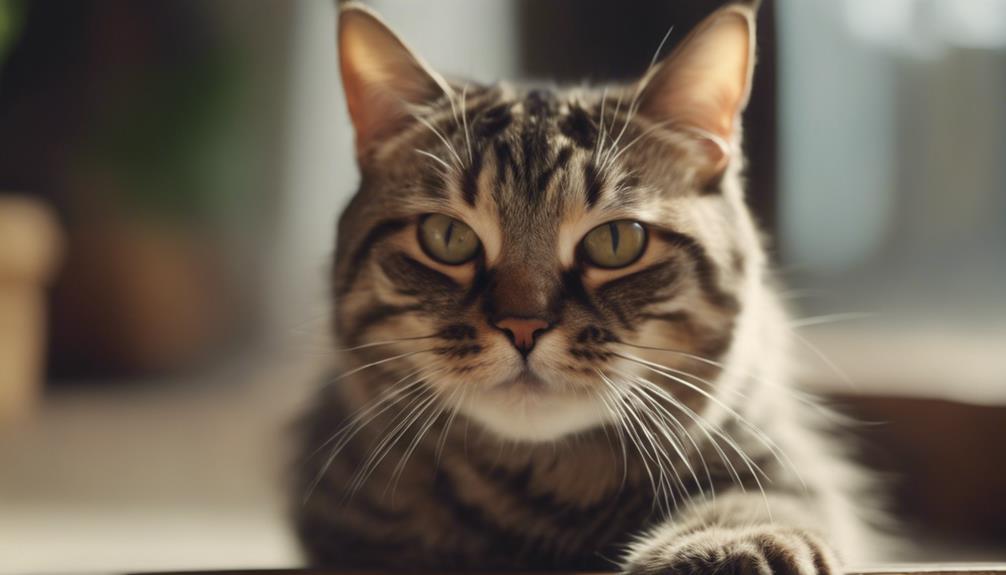
Behavioral influences play a significant role in shaping the size and development of male cats' cheek structure. Elevated testosterone levels in male cats lead to behaviors like roaming and fighting, which contribute to the growth of their cheek muscles. These behaviors stimulate the muscles and skin in the cheek area, resulting in a more pronounced and robust cheek structure.
The constant activity and engagement in territorial disputes enhance the development of the cheek skin, creating a defined and prominent appearance. Therefore, male cats with big cheeks often exhibit a history of testosterone-driven behaviors that have influenced the size and strength of their cheek muscles, highlighting the intimate link between behavior and physical characteristics in feline companions.
Protective Role of Large Jowls
Male cats' large jowls serve as a vital protective mechanism for safeguarding their face, eyes, and neck during potential confrontations and territorial disputes. These prominent features play a crucial role in ensuring the cat's safety and well-being in various situations. The protective function of large jowls is essential for male cats, especially when engaging in behaviors influenced by their testosterone levels.
Here are four key points highlighting the significance of large jowls for male cats:
- Defense: Jowls act as a barrier against potential injuries.
- Intimidation: The size of jowls can serve as a deterrent to potential threats.
- Protection: They help shield vital areas during fights and conflicts.
- Survival: Large jowls contribute to the cat's ability to navigate and thrive in its environment.
Abscesses and Facial Swelling
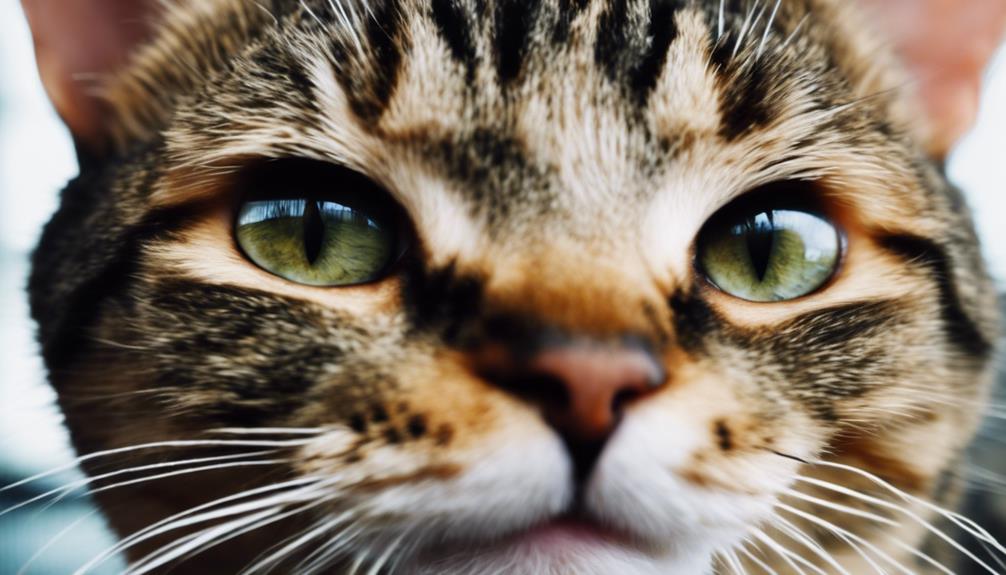
Large jowls in male cats can play a crucial role in protecting against abscesses and facial swelling. Cats, especially unneutered males, are prone to abscesses resulting from fights. Bite wounds can easily become infected, leading to painful swelling on the face. Neutering can significantly reduce the likelihood of such abscesses due to decreased aggression and territorial behavior.
In addition to abscesses, facial swelling in cats can also be caused by dental issues like gingivitis. It is important to monitor any facial swelling closely, as it could indicate a more severe underlying problem such as tumors or allergic reactions. Prompt veterinary attention is necessary to diagnose and treat the cause of facial swelling in cats.
Dental Issues and Redness
Dental issues such as gingivitis can result in redness and discomfort for cats, necessitating prompt veterinary attention for proper diagnosis and treatment. When it comes to dental problems in cats, here are some key points to consider:
- Gingivitis: Inflammation of the gums can lead to redness, swelling, and pain in the mouth.
- Periodontal Disease: Advanced gum disease can cause redness, bleeding, and bad breath.
- Tooth Resorption: This condition can lead to redness around the affected teeth.
- Oral Infections: Infections in the mouth can cause redness, swelling, and overall discomfort for the cat.
Early intervention and regular dental care are essential to maintain your cat's oral health and overall well-being.
Insect Stings and Swelling
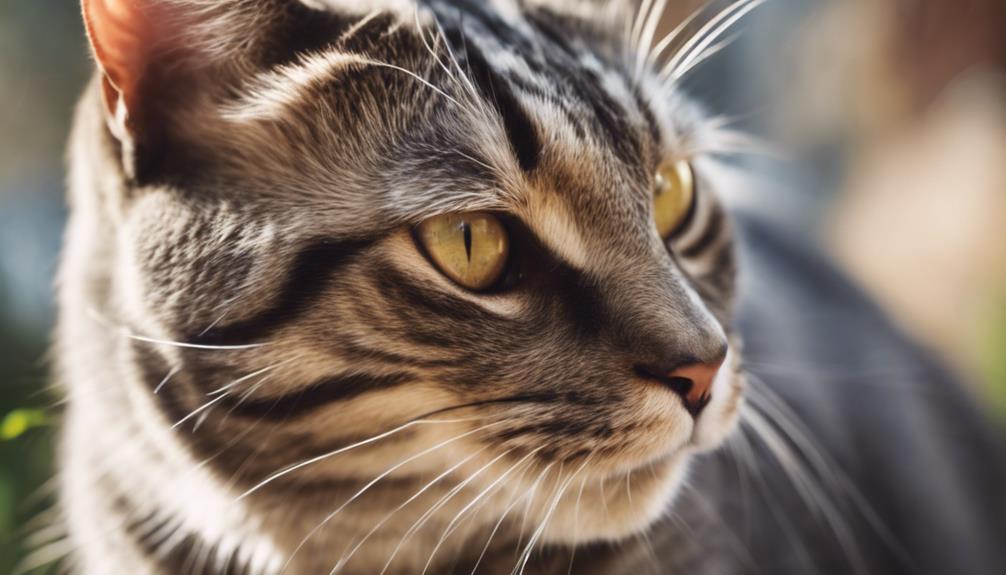
Insect stings in cats can lead to localized swelling, posing potential discomfort and health concerns that require prompt attention and care. When a cat is stung by an insect, their body's natural response may cause the affected area to swell. This swelling can be particularly worrisome if it occurs on the face, as it may lead to difficulties with breathing, eating, or seeing clearly.
Cats may exhibit signs of pain, such as pawing at the affected area or vocalizing distress. Immediate veterinary attention is crucial in these situations to determine the type of insect involved, address any allergic reactions, and provide appropriate treatment to alleviate the swelling and discomfort.
Tumors as Potential Causes
Facial swelling in cats can also be attributed to tumors, highlighting the importance of prompt veterinary evaluation for accurate diagnosis and appropriate treatment. When faced with swelling in a cat's face, especially if it is persistent or worsening, seeking veterinary attention is crucial to rule out serious conditions like tumors. Here are some key points to consider:
- Tumors, including oral cavity cancer, can lead to facial swelling in cats.
- Early detection through veterinary examination is essential for effective treatment.
- Diagnostic tests such as biopsies may be needed to determine the nature of the tumor.
- Treatment options may include surgery, chemotherapy, or radiation therapy depending on the tumor type and extent.
Be vigilant and proactive in addressing any unusual swelling in your feline companion.
Tough Cheek Skin Development
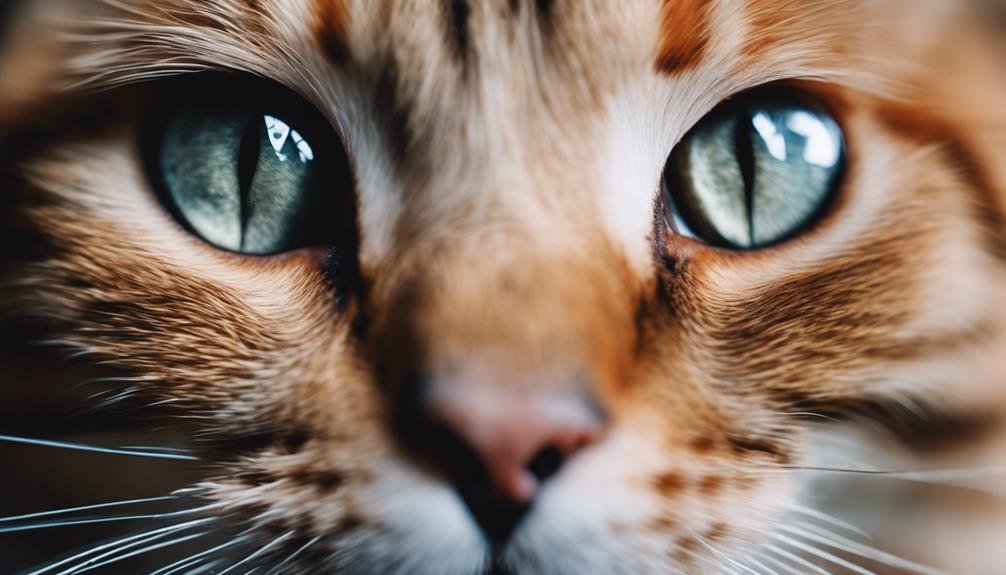
The evolution of tough cheek skin in male cats, particularly in response to heightened testosterone levels, underscores the intricate physiological adaptations that contribute to their distinctive facial features.
As male cats reach sexual maturity, their bodies undergo changes that include the development of thicker skin on the cheeks. This toughened skin serves a dual purpose – it provides protection during aggressive behaviors like fighting, common in unneutered males, and also aids in attracting potential mates.
The presence of sturdy cheek skin enhances the male cat's ability to withstand the rigors of their natural behaviors, ensuring their survival in the wild. Understanding this development sheds light on the fascinating ways in which male cats have adapted to thrive in their environments.
Timing of Sexual Maturity
At approximately six months of age, male cats typically reach sexual maturity, marking a significant physiological milestone in their development. This phase brings about changes in behavior and physical characteristics, highlighting the transition into adulthood. The timing of sexual maturity can vary based on individual factors such as breed and environmental conditions. Understanding when male cats reach this stage is crucial for responsible pet ownership and population control efforts.
Timing of Sexual Maturity in Male Cats:
- Male cats usually reach sexual maturity around six months of age.
- Factors like breed genetics can influence the exact timing of maturity.
- Environmental conditions, such as daylight length, may impact the onset of sexual maturity.
- Early neutering can help prevent unwanted behaviors associated with sexual maturity.
Management Recommendations for Outdoor Cats
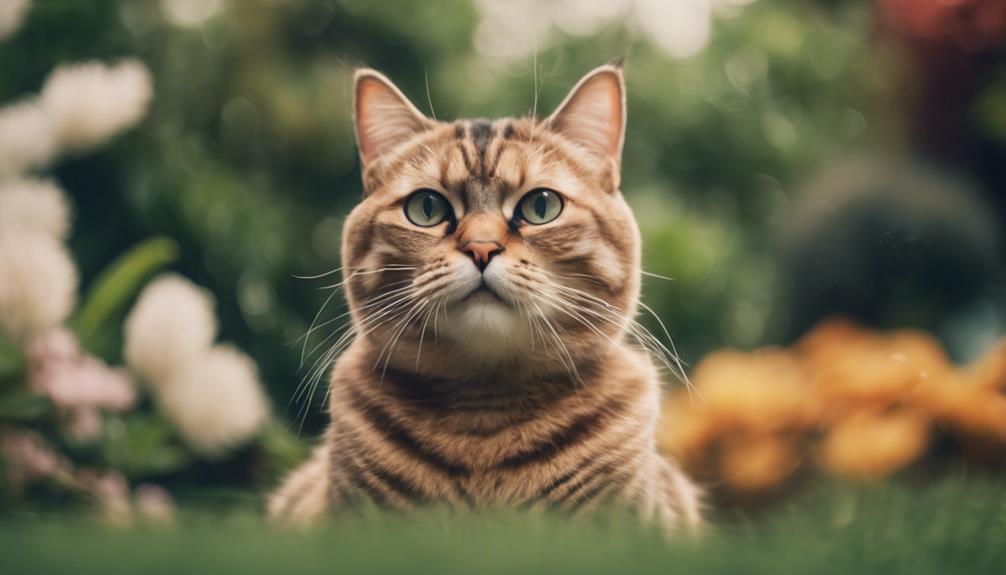
After understanding the timing of sexual maturity in male cats, it is essential to consider effective management recommendations for outdoor cats. Implementing Trap-Neuter-Release (TNR) programs is highly recommended for unneutered roaming cats to control the population effectively.
This humane approach involves trapping and neutering cats, with friendly ones potentially being taken to shelters for adoption. It is crucial to highlight that unneutered male cats have a shorter lifespan, underscoring the importance of neutering not only to prevent overpopulation but also to provide health benefits to the feline community.
Frequently Asked Questions
How Can Owners Distinguish Between Testosterone-Induced Thickened Skin and Actual Fat Accumulation in Male Cats' Cheeks?
In male cats, distinguishing between testosterone-induced thickened skin and fat accumulation in cheeks involves monitoring behavior changes, consulting a veterinarian for a physical examination, and conducting hormone level tests. Understanding these distinctions aids in appropriate management.
Are There Any Specific Grooming Techniques or Products Recommended for Male Cats With Big Cheeks Due to Elevated Testosterone Levels?
For male cats with big cheeks due to elevated testosterone levels, gentle grooming techniques like regular brushing can help maintain skin health and reduce discomfort. Consult a veterinarian for advice on suitable grooming products for your cat's specific needs.
Can the Size of a Male Cat's Jowls Vary Depending on the Level of Testosterone in Its System?
Yes, the size of a male cat's jowls can vary based on testosterone levels. Elevated testosterone leads to larger jowls, serving as protection during fights. Understanding hormonal influences on facial features aids in managing and caring for male cats effectively.
Are There Any Specific First Aid Measures That Owners Can Take at Home for a Cat With Facial Swelling From an Abscess?
For cat facial swelling from an abscess, initial home care includes cleaning the area with mild soap and water, applying a warm compress to promote drainage, and monitoring for signs of infection. Prompt veterinary assessment is crucial.
What Are the Common Symptoms That May Accompany Facial Swelling in Cats Due to Dental Issues Like Gingivitis?
Common symptoms accompanying facial swelling in cats due to dental issues like gingivitis include redness, bad breath, drooling, reluctance to eat hard food, pawing at the face, and overall discomfort. Prompt veterinary attention is crucial for proper diagnosis and treatment.
Conclusion
In conclusion, the presence of big cheeks in male cats is closely tied to elevated testosterone levels, resulting in thickened skin rather than fat accumulation. This physical characteristic serves a dual purpose of protection during territorial disputes and signaling sexual maturity.
Understanding the hormonal influences and behavioral effects on cheek size is crucial for proactive veterinary care and responsible pet management practices, especially for outdoor cats.
By delving into the complexities of feline health, we can ensure the well-being of our beloved companions.




